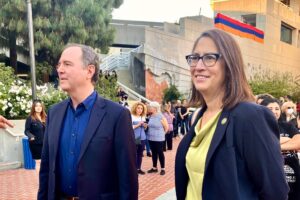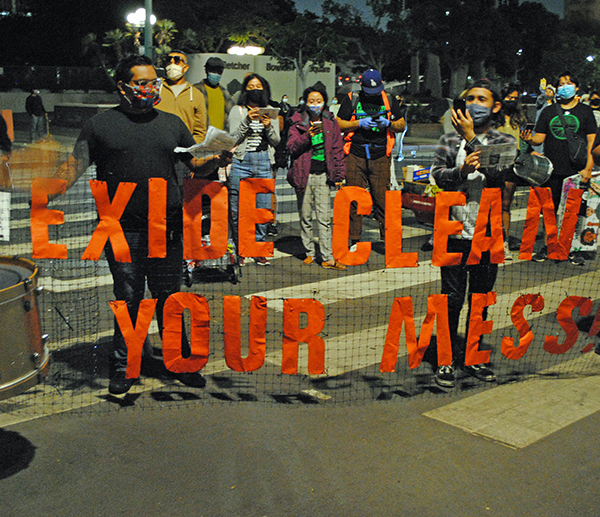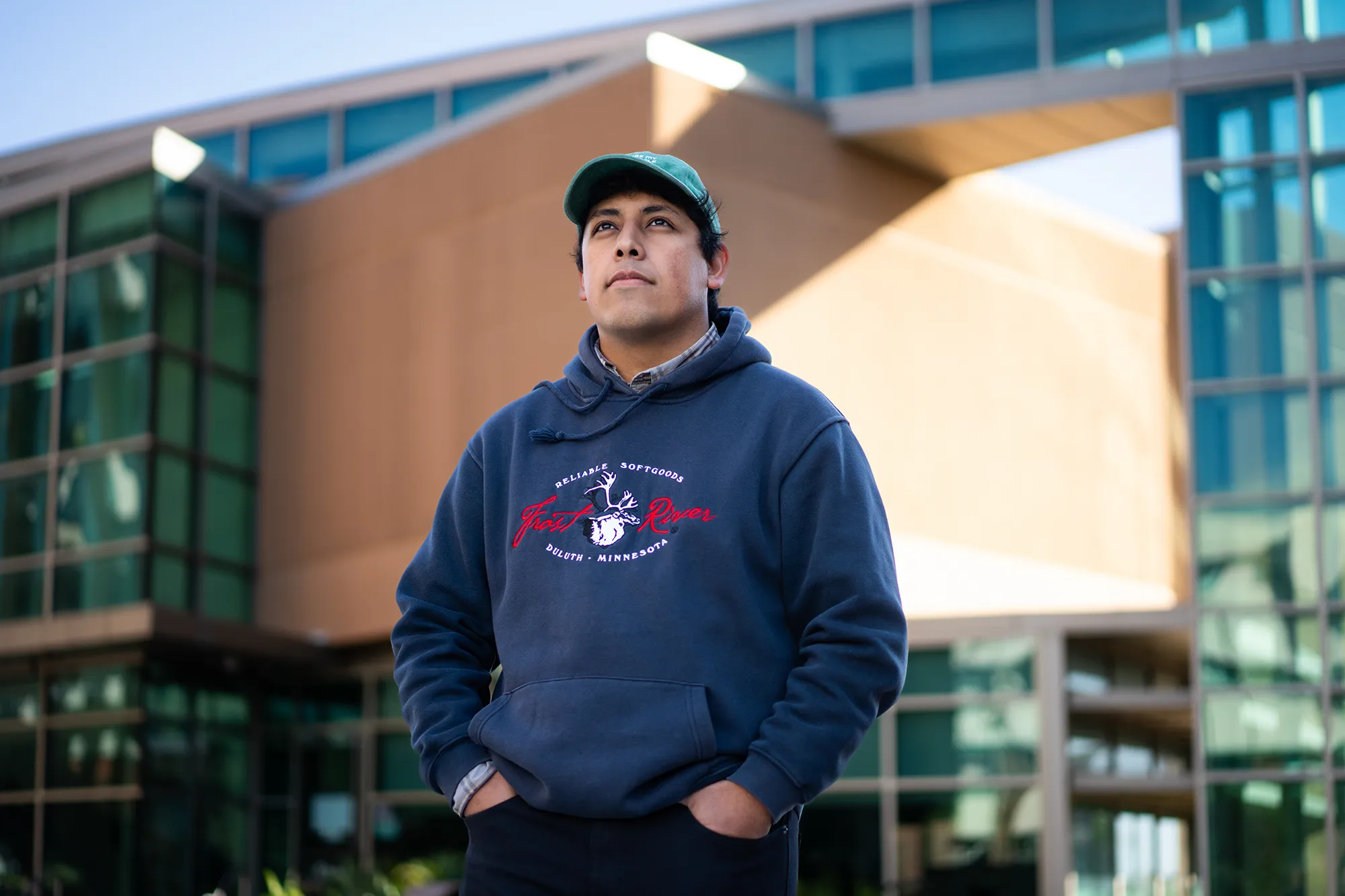By Alfredo Santana
Contributing Writer
VERNON — A contract worth $82 million to cleanup residential properties with unusual shapes and difficult to access for crews with heavy equipment to remove lead-contaminated soil from the former Exide battery plant has prompted concerns from residents who accuse the state agency in charge of resources of mismanagement and lack of transparency.
The issue stems from a contract signed between the state Department of Toxic Substances Control and Parsons Environmental & Infrastructure Group in October 2018 to clean up 1,610 residential properties located in an area within a 1.7-mile radius of the plant and to restore soil to levels similar to those found before the excavations.
Three years before, the same agency and Parsons agreed on a $3.7 million contract that the contractor would decontaminate 1,910 residential properties at a cost of $1,937 per parcel.
The more expensive contract had a price tag of $50,931 to cleanup each “sensitive land property.”
Those costs do not include expenses related to sampling dirt, chemical and lab analysis and their storage.
Pricier costs associated with removing dirt with hazardous lead levels and replenishing them with clean dirt contain complicated nuances, said East Yard Communities for Environmental Justice Co-Director Mark Lopez.
He said the initial cleanup costs were exponentially low compared to the latter cleanups conducted by Parsons, because the first properties targeted yards for sampling and dirt removal were located on flat surfaces with accessible streets for machinery, work crews and to carry replacement soils.
Ane Deisder, former vice president of Parsons Environment & infrastructure Group in Pasadena, said she left the company about four years ago, and declined to comment on the contracts established with the Department of Toxic Substances Control to conduct residential cleanups near the Exide facility.
Deisder was named Parsons’ contract manager in the $82 million deal that concluded on Dec. 31, 2020. She referred questions related to the Exide cleanup program to current Parsons management.
Laurie Anne Hudgeons, a subcontract procurement manager with Parsons in Austin Texas, and Ben Mills, a subcontract administrator with the same company in Pflugerville, Texas, did not respond to requests for comment for this story by press time.
As more tests were conducted, the Department of Toxic Substances Control determined that parcels on slopes with uneven surfaces and properties with unusual shapes had elevated lead levels and required cleanups at much more higher costs, said Lopez, who is a member of the Exide’s Community Cleanup Team.
“The first homes were rectangular sized, with street access and generally were easier to clean,” Lopez said.
However, serious problems arose when the state sought to clean more complex properties with nonrectangular shapes on hillsides. When property owners signed documents to authorize the cleanups, Lopez said contractors and their crews faced allegations of racism from residents and a community movement ensued to force contractors to hire and train local workers to perform the cleanups.
In addition, the job quality began to unravel.
“Unfortunately, this type of [property] setups incentivized cutting corners in the cleanups,” Lopez said. “We directed the state to have more quality cleanups.”
Hence, in August 2016 the Department of Toxic Substances Control negotiated a new contract with Arcadis U.S. Inc. for $6.6 million to conduct cleanup of lead-tainted soil in properties with rougher perimeters to access. An amendment signed in January 2017 committed Arcadis to allocate a load of 40% of all work hours to crews living in the affected vicinities.
Lopez laid blame on the Department of Toxic Substances Control’s initial crisis mismanagement that resulted in lack of accountability about ballooning cleanup expenses, and for dragging its feet in launching and accelerating works to restore cleanliness to yards belonging to blue-collar residents burdened with cancer and respiratory diseases they said were caused by Exide’s unabated lead particles.
“I wanted to find out why it was so expensive to clean uphill slopped properties,” Lopez said. “Also, how many properties were cleaned up a week, and their costs.
“Contractors had subcontractors, whom had other subcontractors. Unfortunately, these levels of subcontractors had taken money for the cleanups.”
Mehdi Bettahar, manager of residential and parkway cleanup for the Exide project with the Department of Toxic Substance Control, did not respond to an email request seeking explanation for why the agency agreed to pay Parsons $82 million to conduct cleanups in 1,610 properties at press time.
John Moretta, a priest at Resurrection Catholic Church in Boyle Heights and a member of the Lead-Free Communities Coalition, said residents affected by Exide’s toxic metal releases have voiced their concerns for possible overrun costs charged by test and cleanup contractors.
At community meetings, those in attendance have brought up costs that reached up to $80,000 per parcel for testing lead concentrations found in outdoor dirt, and replacing them with clean soil, Moretta said.
‘When they started, cleanup costs ran about $40,000 a residential property,” Moretta said. “We feel we are at the mercy of these [contractors] if the politicians can’t track these costs. A lot of the yards have concrete and don’t have much exposure to dirt.”
Storing soil samples from thousands of properties with labels identifying their addresses contributes to the ballooning cleanup costs, he said.
Moretta called on area state legislators to keep track of rising cleanup contracts amid a proposed increase of public funds from Gov. Gavin Newsom to continue decontamination of residential lots and in the perimeter of the former Exide smelter.
Newsom’s revised budget for the 2021-22 fiscal year allocates $132 million for the facility’s additional cleanup supervised by the current Vernon Environmental Trust Fund, and $291 millions more to be used in the next three years to continue lead removal for 10,000 properties.
The money comes from better than expected income streams during the COVID-19 pandemic, as the California governor announced an estimated $76 billion revenue surplus.
Nonetheless, final figures for environmental cleanup allocations may vary when the final budget is approved by the state Legislature. The non-partisan Legislative Analyst’s Office said Newsom erred in his accounting formula and there are only $38 billion for additional expenses in the budget.
Former Gov. Jerry Brown approved $251 million for lead removal from homes, schools and parks contaminated by Exide’s airborne lead releases and other expenses associated with the case.
State officials estimate that 3,200 properties would be cleaned by year’s end, and without additional funding the home cleanups would stop.
But as new public fund sources emerge, Moretta called on state legislators to be vigilant and avoid falling prey to skyrocketing cleanup costs with private contractors landing overly expensive cleanup contracts.
“I think it is our responsibility to keep up with where all our money is going,” Moretta said.
Lopez criticized the state’s approach to the Exide’s cleanups, due to its decisions made from Sacramento, and for ignoring those in the area. Each property carries unique needs, he said.
“This cleanup has been so mismanaged that at the end of the day we had doubts whether the cleanups would ever be completed,” he said. “I know that the governor’s new allocations mean a lot of money, but we need it for the cleanups. It’s hard for us to accept the money would be directed to the same agency in charge of the cleanups.”
Alfredo Santana is a freelance reporter for Wave Newspapers who covers the Southeast Los Angeles County area. He can be reached at alfredo68j@hotmail.com.











